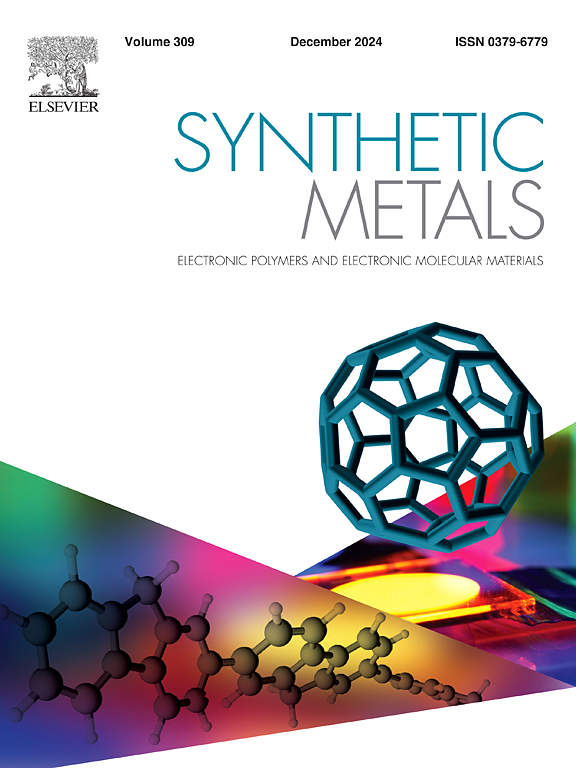利用带跳输运机制分析导电掺杂聚3,4-乙烯二氧噻吩(PEDOT)的霍尔效应
IF 4.6
3区 材料科学
Q2 MATERIALS SCIENCE, MULTIDISCIPLINARY
引用次数: 0
摘要
对聚(3,4-乙烯二氧噻吩):聚(4-苯乙烯磺酸)在21 ~ 301 K温度范围内经硫酸(PEDOT:Sul)处理后的霍尔效应和电导率进行了测量。观察到的电导率的温度依赖性表示为金属带电导率和变范围跳变电导率的总和。金属带导的贡献很大,表明H2SO4处理后形成了金属畴。由霍尔效应直接导出的电荷数密度非常大,约为1023 cm−3,这被称为“不当”霍尔效应。假设只有离域载流子对霍尔效应有贡献,我们利用金属传导和变范围跳变传导的分解电导率得到了金属传导中的电荷数密度。得到的数值范围为(3.1 ± 0.2)× 1021和(4.7 ± 0.3)× 1021 cm−3。本文章由计算机程序翻译,如有差异,请以英文原文为准。
Hall effect analysis of conducting doped poly(3,4-ethylenedioxythiophene) (PEDOT) using band and hopping transport mechanisms
Hall effect and electrical conductivity measurements were performed on poly(3,4-ethylenedioxythiophene):poly(4-styrenesulfonate) treated with sulfuric acid (PEDOT:Sul) in the temperature range between 21 and 301 K. The observed temperature dependence of the electrical conductivity was expressed as the sum of the metallic band conductivity and variable-range hopping conductivity. The contribution of metallic band conduction was large, indicating that metallic domains are created upon H2SO4 treatment. The charge number density directly derived from the Hall effect was extremely large, on the order of 1023 cm−3, which is called the “improper” Hall effect. Assuming that only delocalized band carriers contribute to the Hall effect, we obtained the charge number densities in metallic conduction using the decomposed conductivities for metallic conduction and variable-range hopping conduction. The obtained values ranged between (3.1 ± 0.2) × 1021 and (4.7 ± 0.3) × 1021 cm−3.
求助全文
通过发布文献求助,成功后即可免费获取论文全文。
去求助
来源期刊

Synthetic Metals
工程技术-材料科学:综合
CiteScore
8.30
自引率
4.50%
发文量
189
审稿时长
33 days
期刊介绍:
This journal is an international medium for the rapid publication of original research papers, short communications and subject reviews dealing with research on and applications of electronic polymers and electronic molecular materials including novel carbon architectures. These functional materials have the properties of metals, semiconductors or magnets and are distinguishable from elemental and alloy/binary metals, semiconductors and magnets.
 求助内容:
求助内容: 应助结果提醒方式:
应助结果提醒方式:


